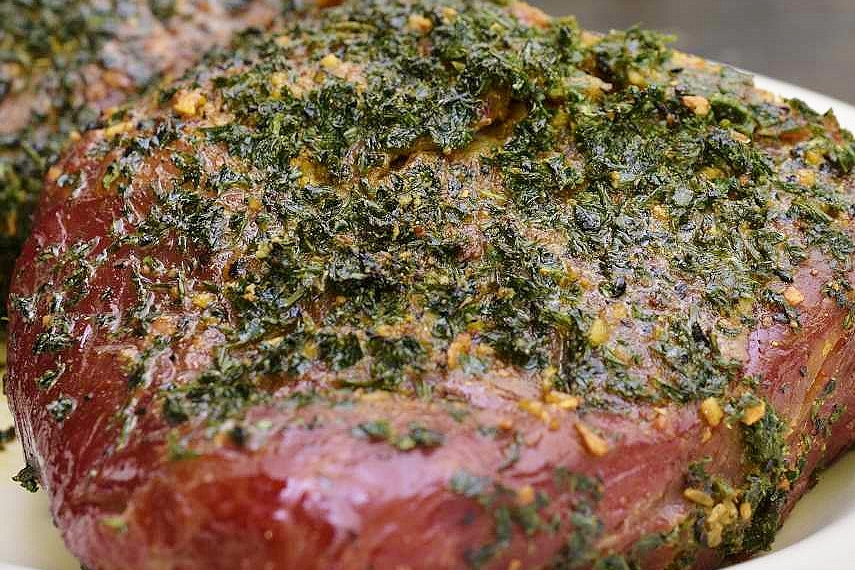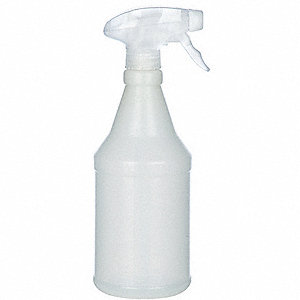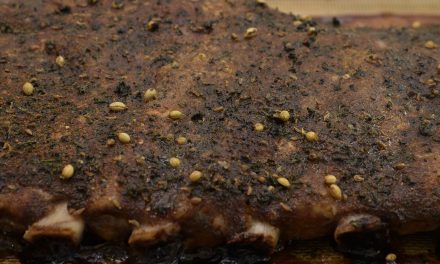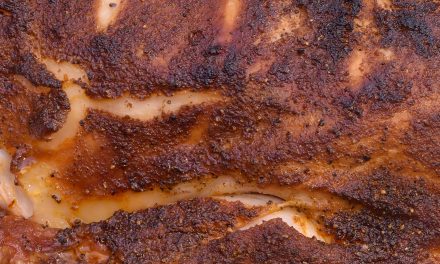There are a number of Facebook groups on sous vide now. Many of them are pretty good places to TALK about sous vide. This one is a good place to LEARN about sous vide.
The Time of the Seasons
Members of the sous vide Facebook Group have heard me explain that while putting seasonings in the bag may be safe in most cases, it is for the most part ineffective. Most members know that this is not my opinion, but rather the results of some solid scientific research as documented HERE. Even dedicated sous vide and other recipe resources are beginning to concede that with the exception of sodium ions, flavor infusion/penetration is wishful thinking.
As the temperature increases, the penetration of sodium ions into the protein matrix does accelerate–the question is, is that what one really wants? Cured meats like corned beef and ham have a distinctive flavor and texture that is pleasing to most–the result of the sodium ions interacting with the myoglobin in the meat. But these characteristics are not necessarily favorable in the case of a steak, for example. Seasonings in the pouch will flavor the juices released during processing, but there are other ways to achieve this after processing is completed.
A Sticky Situation
While generally avoiding direct contact with it, most people are familiar with the texture and appearance of egg whites. Composed largely of a protein called albumen, that sticky stuff is a specific form of albumins. Albumins occur in all meats and create that shiny, clingy surface that most of us are also familiar with. Albumins are the reason that seasonings stick to the surface of meats.
Sous vide processing denatures albumins so that they lose their sticky texture. The albumins collect in the bag along with denatured myoglobin. When heated to full denaturization, they form a substance that smells of cooked egg whites, sulfur and iron. If separated from the juices, they look like this:
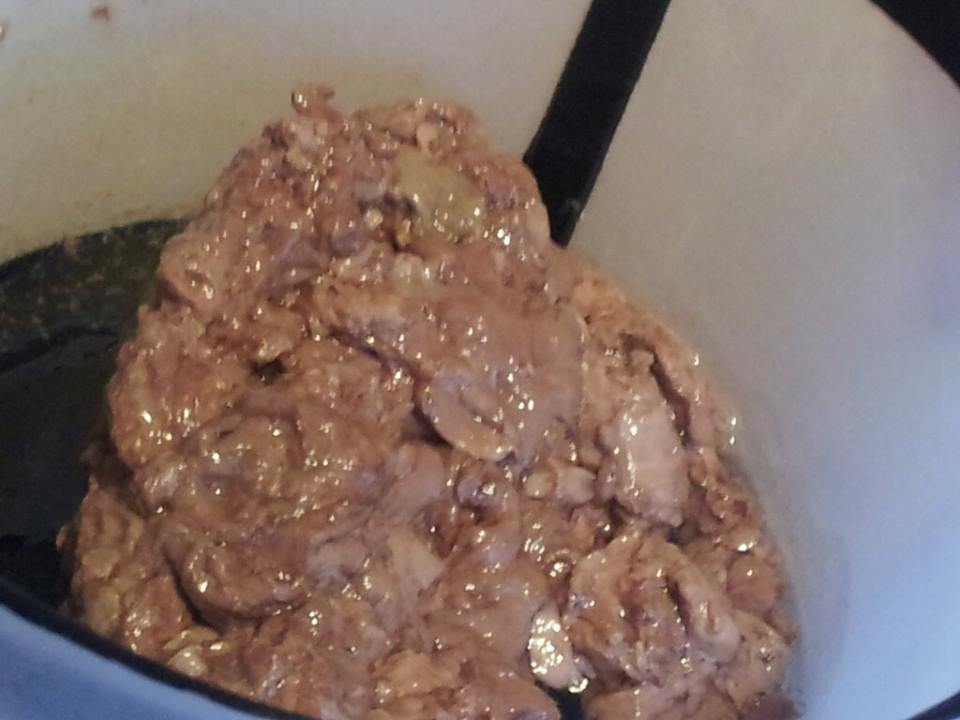
Okay, now that we’re grossed out
The question is, now that we’ve removed all the albumins on the surface of the meat, how do we get seasonings to stick to the surface of sous vide processed proteins? Some people use mayonnaise, or even mustard, and some people are satisfied with the effect. More power to them, whatever works. Just attempting to sprinkle with salt and pepper does appear to be more trouble than it’s worth. That’s almost as useless as putting stuff in the bag.
But do not despair. You thought I was just talking about egg whites as background or as one of my legendary digressions into insignificant minutiae. The fact is, albumen can be used to recreate the sticky surface. Darn. I know what you’re thinking. “I’m not used to it like a chef is, and the sensation of egg whites on my fingers is just too cringeworthy to make a habit of.” It’s true–I don’t even notice the goose flesh inspiring sensation after all these years, all those brunches, all those batches of Hollandaise and mayonnaise and meringue. Relax. You’re going to be totally jazzed.
Investments in infrastructure
Before we go any further, I’m going to recommend that you buy a couple of things. I hardly ever do that, but these things are best kept chefs’ secrets and they are not expensive.

Shakers. Actually called a “dredge,” but very commonly used for powdered sugar, cinnamon, etc.
Spray Bottles. People use these for misting their plants and discouraging their pets from doing whatever they are doing that they shouldn’t be doing. Chefs use them to moisten surfaces but they are also great for misting vinegar on salads and other things too. Some chefs put a little bleach water in them to keep up with sanitizing work surfaces, but, if you do that, you should DEFINITELY label the bottle.
Take a powder
It was there all along. Powdered egg whites. Bakers and pastry chefs use them to avoid accumulating all those egg yolks and weight lifters use them to fortify high protein diets. They’re not new, and they’re not artificial. They are pasteurized, which means you don’t have to worry about Salmonella either. If you mix them with a prescribed amount of water, they turn into that sticky stuff; really great for meringue.
Therein lies the rub
Rubs and seasoning blends are easy to make and I have recipes for either and both on the website and in the group. Even so, most people still end up buying Montreal this or New Orleans that. The good news is that proprietary seasoning blends can be combined with powdered egg whites to create a surface treatment that really sticks to whatever. There’s a couple of simple things to remember.
When it comes to seasoning meats, most chefs aim at no more than 2 teaspoons of salt per lb/450 g of meat. Beyond that, all that paprika and oregano and allspice and pebbles and beads are just a matter of preference. You can blend a tiny amount of the egg white powder with any blend and get good results. It doesn’t take much. You mist the surface of your protein with water from the spray bottle and sprinkle the egg white infused rub. I usually do larger pieces of meat one side at a time. Give it a few minutes to cling. But there’s even an easier way.
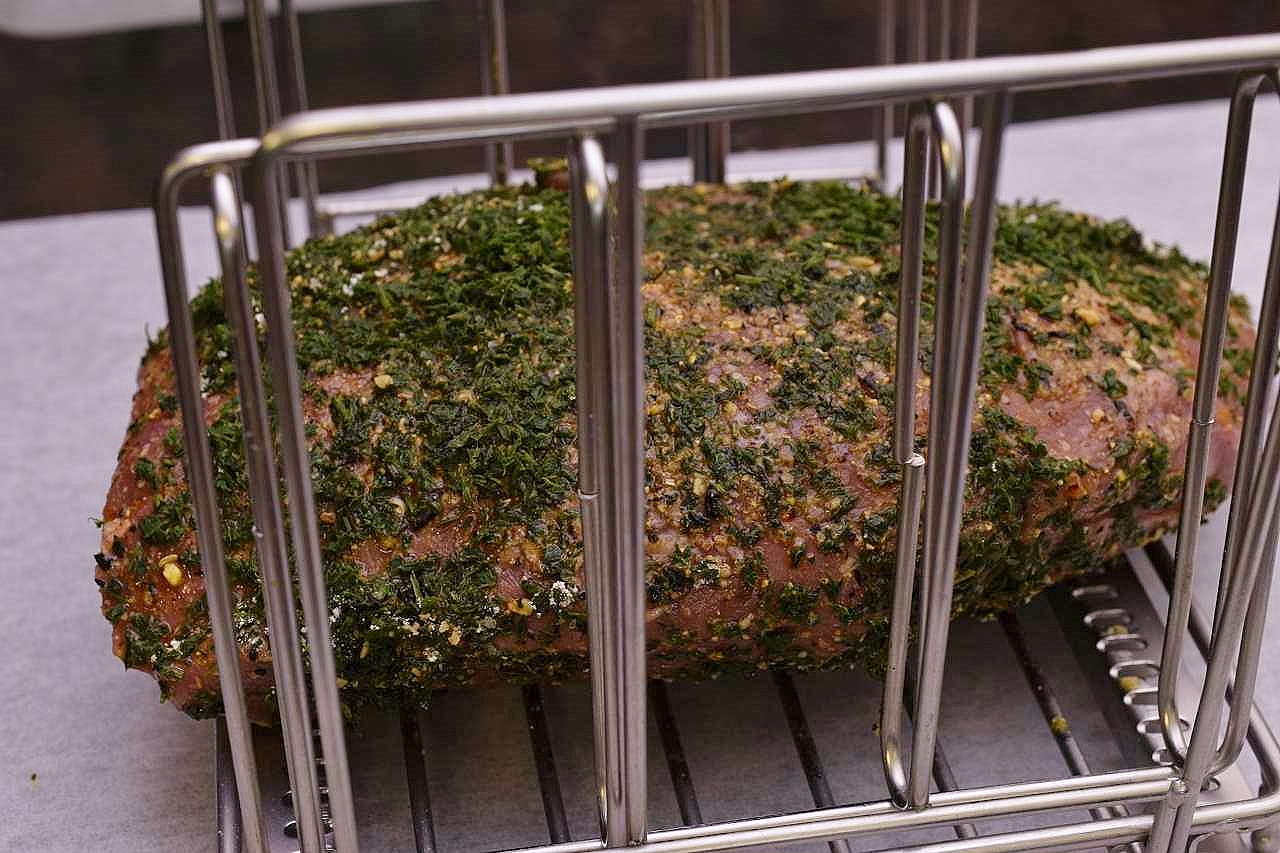
Build your own thing
Once you’ve processed your protein–almost ANY protein–remove it from the bag, collect and/or discard the juices and pat the object dry with a paper towel.
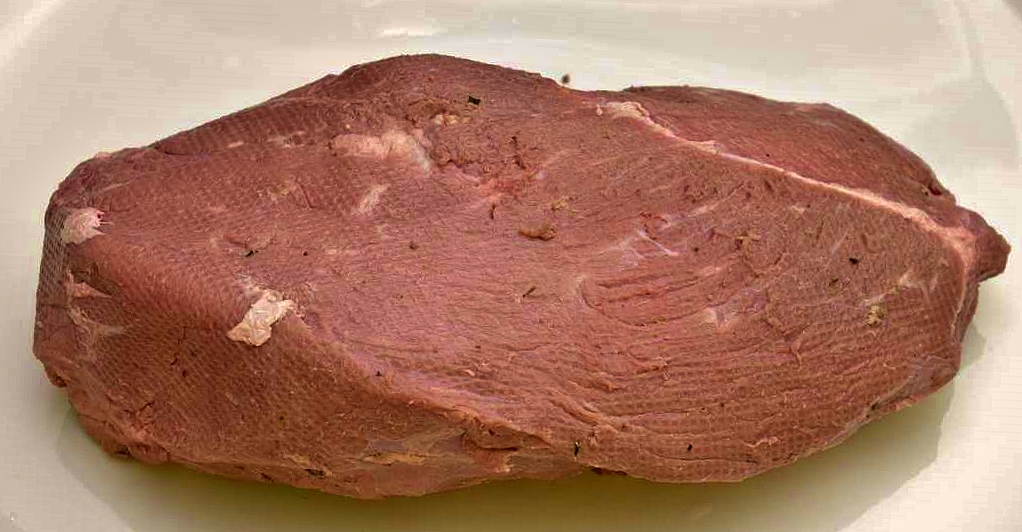
Put the protein on a plate or a sheet of parchment. Put some powdered egg white in one of those dredges/shakers. I suggest you label it somehow. It does look pretty much like flour or powdered sugar, so confusing one with another could have consequences.
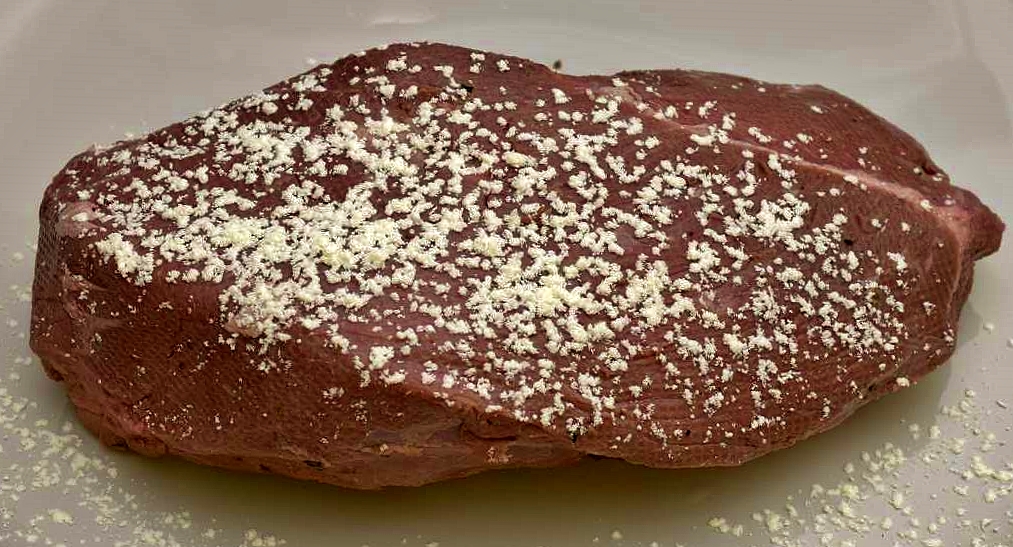
Shake a little egg white on the top surface.
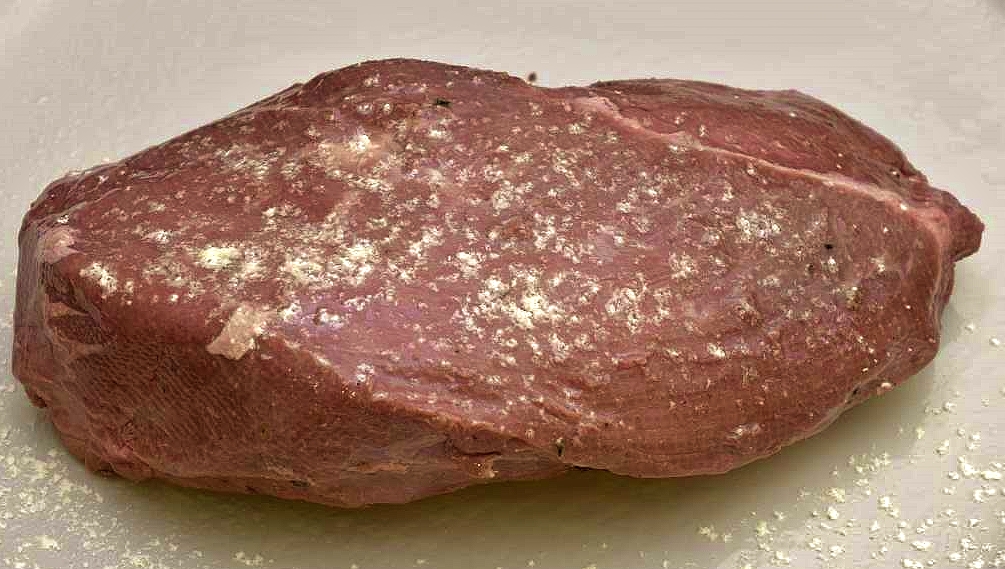
Use the spray bottle/mister to moisten the egg whites. They will turn to sticky stuff right away, almost before your eyes.
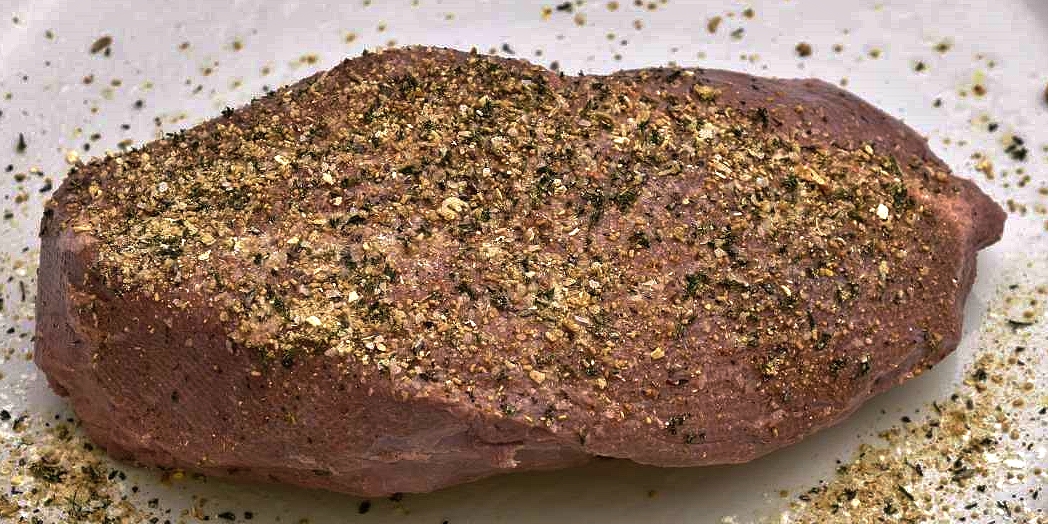
If I am using a sodium free rub, I sprinkle with a pre-measured amount of kosher salt so I’m sure I get that right. Then I build a real time rub by just sprinkling this and that or some sodium free rub that I dreamed up and actually assembled.
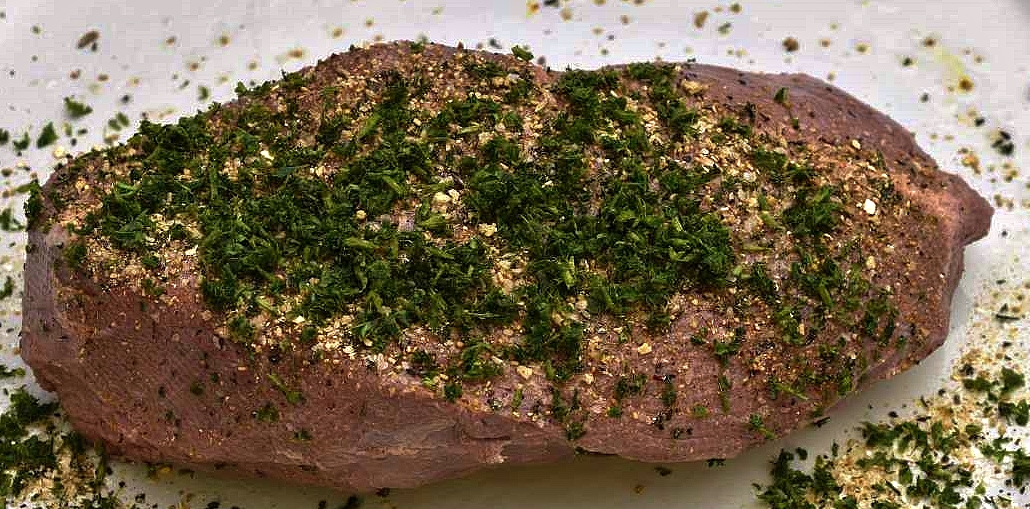
You can also just sprinkle your McKesson or whatever right on that sticky surface. Wait a minute for the stuff to attach itself, and mist again. Sprinkle with chopped parsley, and there’s a reason. See below.
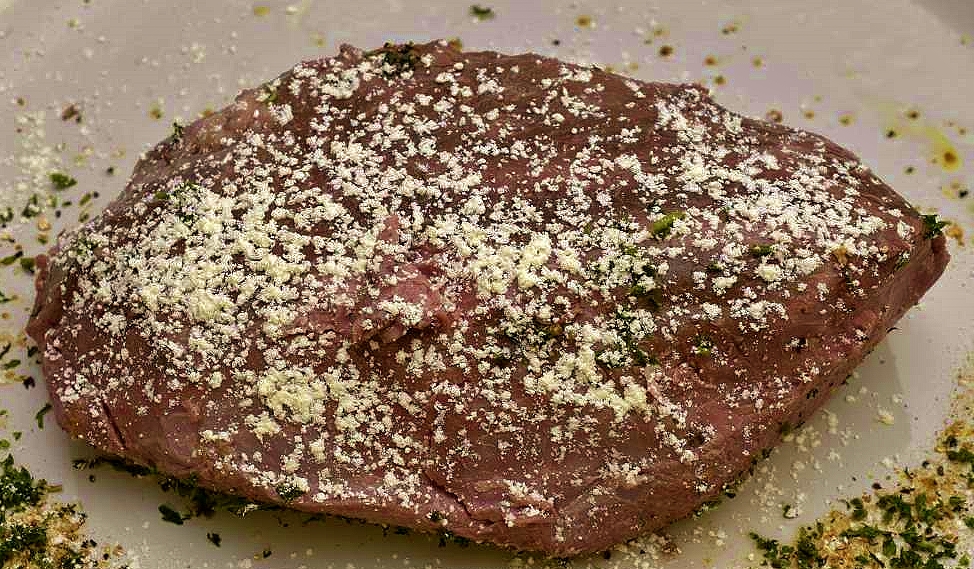
Turn the meat over and repeat the process.
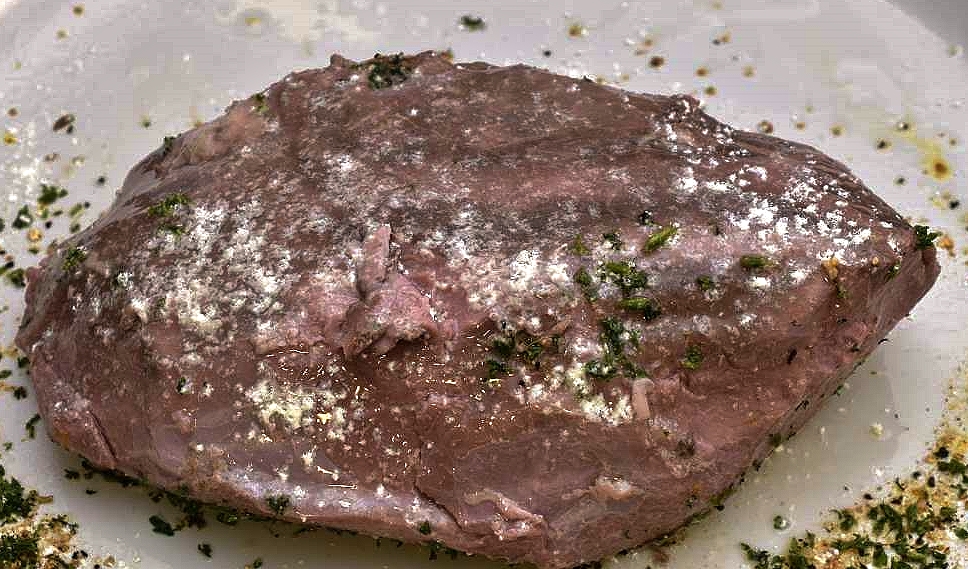
HERE is a link to the rub I used in this recipe.
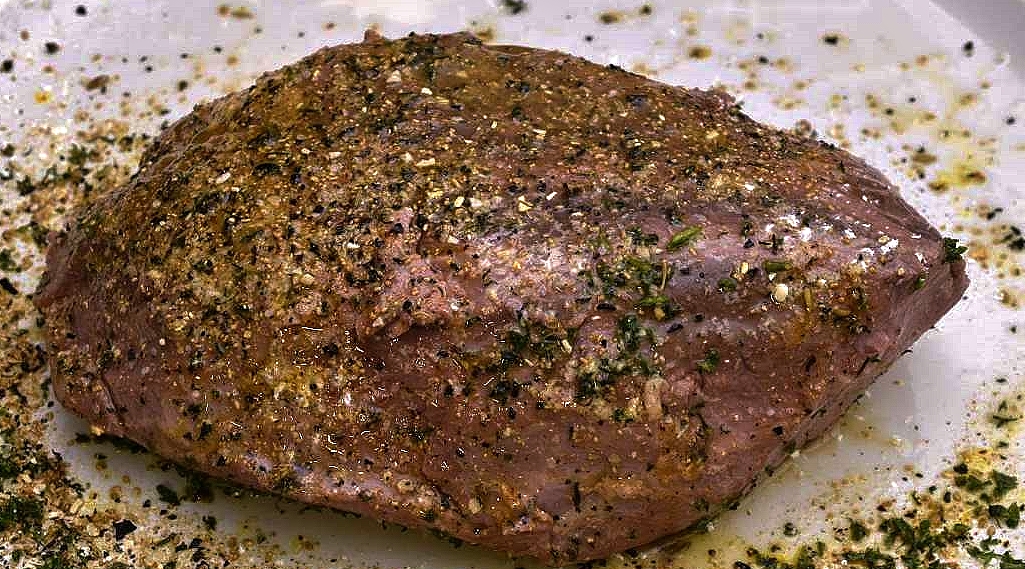
Misting after applying the rub helps the parsley stick.
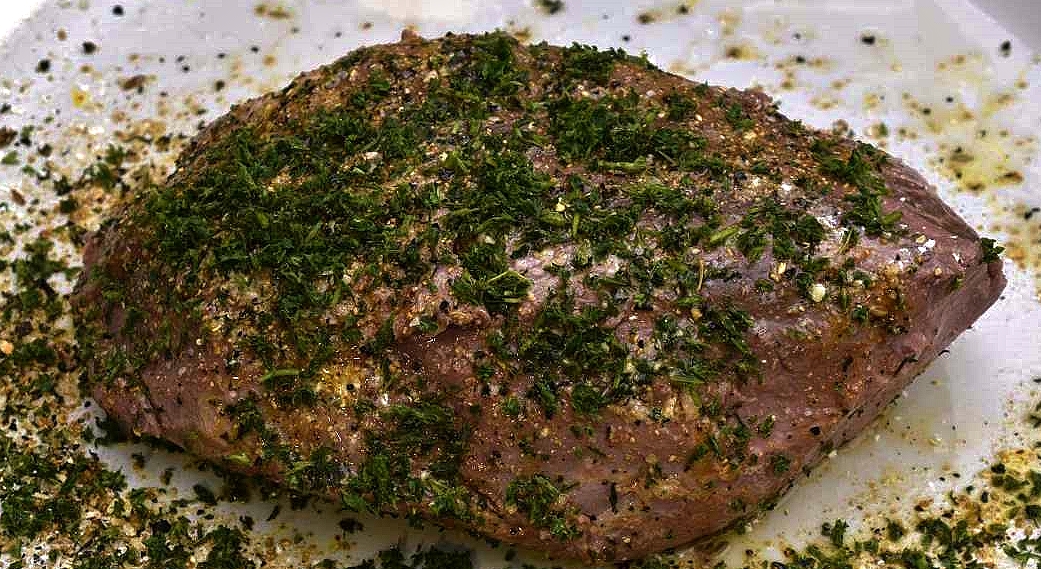
I sprinkle parsley over the coated roast to insulate the moist seasonings from the surface of whatever it comes in contact with.
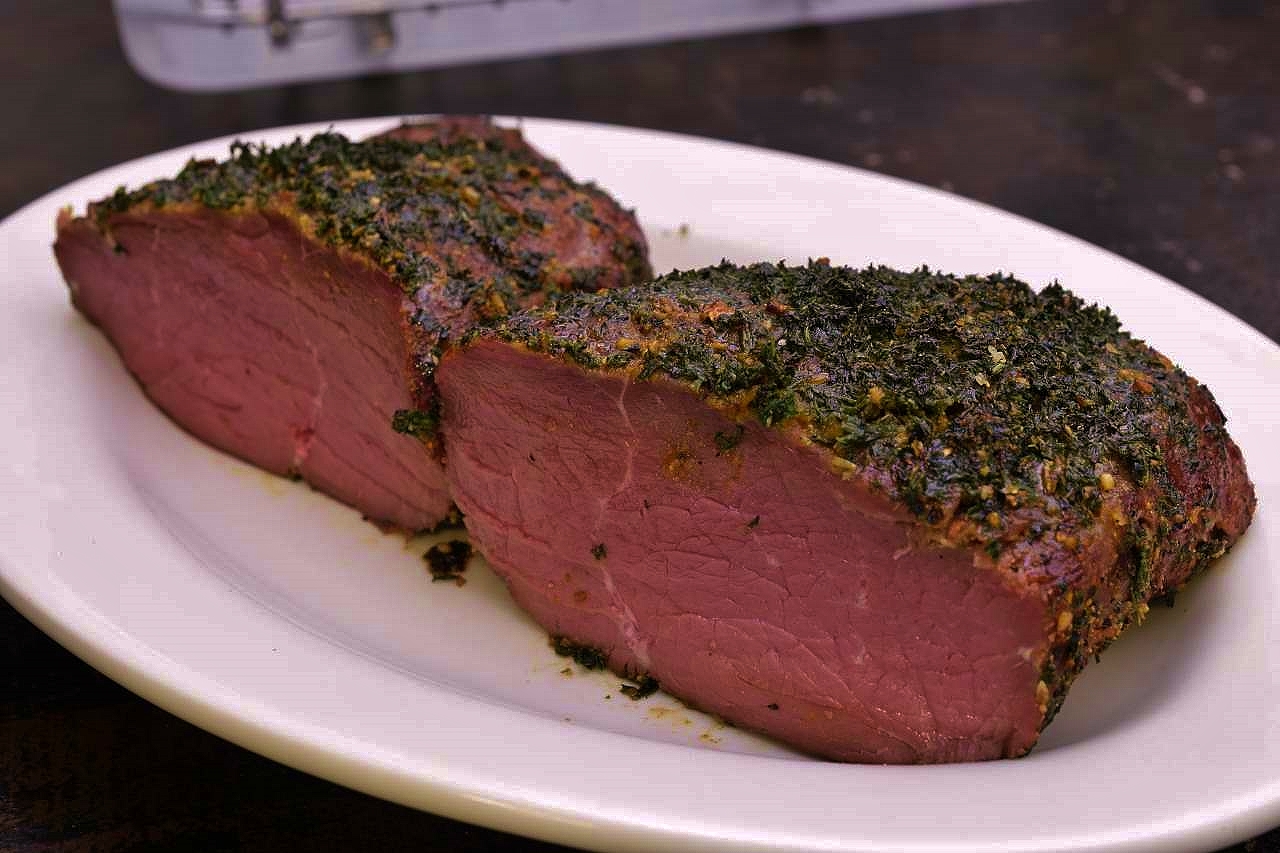
Great for coating steaks, roasting, smoking, whatever…
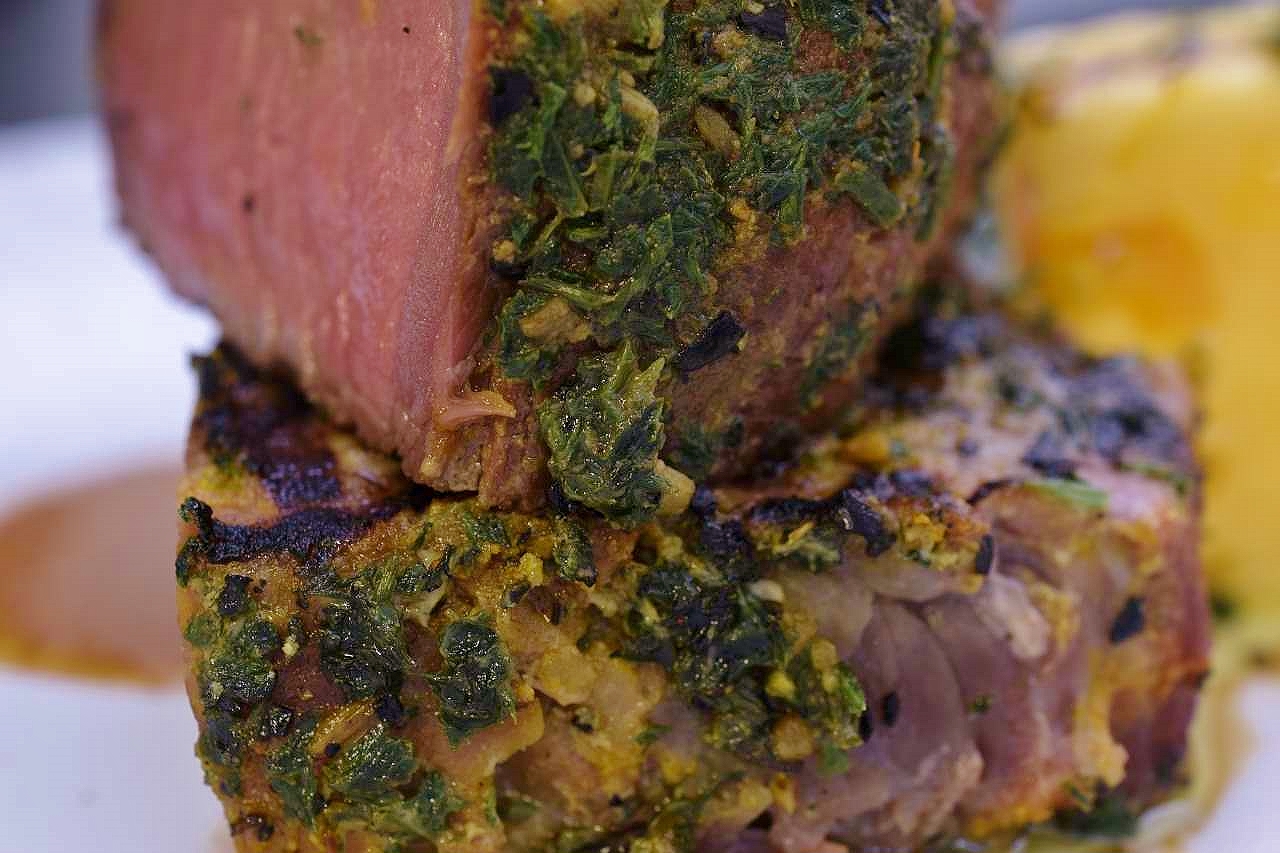
And you thought I just had a thing for parsley.
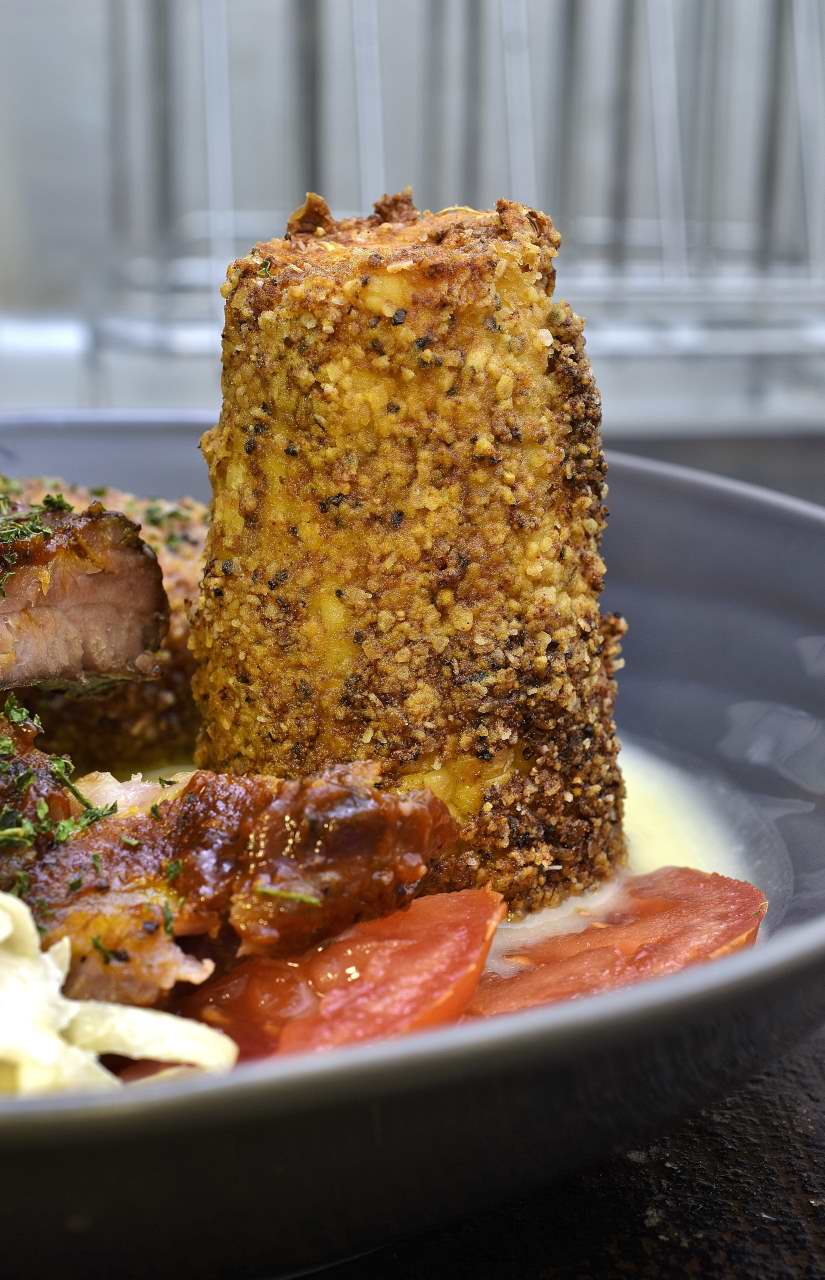
Works on corn, too!

